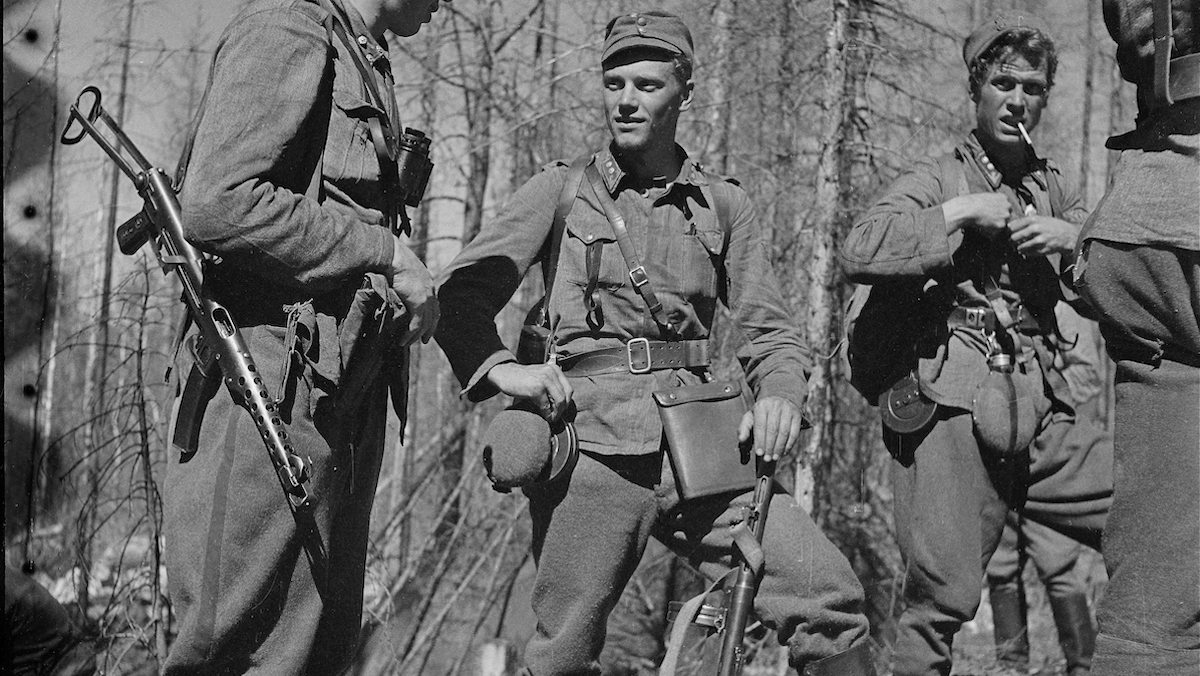Military legends come in all shapes and sizes, dating back as long as records exist. A person with a moderate interest in military history may know about Achilles and Odysseus in the Trojan War (which may or may not have ever happened), or the Japanese soldier Hiroo Onoda, who refused to surrender until hearing a direct order from a superior in 1974.
Aficionados of this site may even remember General Pickett of both the Pig War and the Civil War. But the story of Lauri Törni is unusual, even when compared to those stories.
You might see the name Lauri Törni and think that it’s not American, and you’d be right. He was Finnish. Your next thought might be that America is Weird would be a nonsensical place to write about such a guy, but you’d be wrong.
Lauri Törni entered the Finnish military in 1938. He was thrust into action in the Winter War, late in 1939, when Finland fought the Soviet Union separately from the impending World War II. He apparently became a decorated soldier during the ensuing year or two, which led him to the rank of second lieutenant in the Finnish reserves.
But when the Winter War ended, he needed something to do, and since he’d been fighting the Soviet Union for the past 18 months, he seemed to want to continue riding that wave, so Törni went to Vienna and trained with the SS. Obviously this put him on the radar of the Nazi party and their military records, though he wasn’t strictly fighting for the Nazis as he returned to Finland later that year.
In fact, his return to Finland was to take part in the Continuation War, which was basically just an extension of the Winter War: Finland v. Soviet Union. This went on until the end of 1944. So in early 1945, when the Germans were beginning to fall very short on soldiers, a pro-German group in Finland recruited Törni for saboteur training in Germany. Before he could return to Finland, however, he joined a German unit and fought in Nazi colors until his unit surrendered to British troops in the spring of 1945.
Törni escaped a British POW camp in June of 1945 and went back to Finland. He was nabbed by the Finnish police due to his time with the Nazis but escaped them… and was caught again. This time he was tried for treason and sentenced to six years in prison as of January 1947. In June of that year he escaped again. And then he was captured AGAIN. By Christmastime in 1948 the Finnish president granted him a pardon and Törni took it as a sign to get the hell out of Finland.
Lauri Törni Makes His Way to the United States
Apparently getting to America in the postwar 20th century was not as straightforward as it seemed at first. Törni’s path included a stop in Sweden for a few months, then a ship to Caracas, Venezuela, where he hopped another ship to the USA. He apparently jumped overboard and swam to shore when the ship was just off the coast of Mobile, Alabama. But since he was now a refugee, he wanted the help of a larger community of Finns than Mobile had to offer, so he headed for New York City.
By 1953, he was living in New York among his people, and decided he once again needed to go kill things or something. He enlisted in the US Army in 1954 and became Larry Thorne. It’s entirely unclear whether it was open knowledge that he’d fought against the Allies in WWII, but it didn’t stop him from joining the Special Forces. And as you might assume, as a Special Forces officer, he taught skiing. He taught other things, too, but he taught skiing… in the US Army Special Forces. What a time.
By 1960, Thorne was a captain and serving in West Germany. In late 1963, he was deployed to South Vietnam, where he received two Purple Hearts. Ultimately, however, a helicopter carrying him and other troops disappeared in October of 1965 and was unable to be located. Thorne was presumed dead and posthumously promoted to major and received the Legion of Merit and Distinguished Flying Cross awards.
Thirty-five years later his remains were somehow found by a task force attempting to locate remains in Vietnam, and he was repatriated to the USA (where he’d received citizenship before shipping off to war). He was buried at Arlington National Cemetery on June 26, 2003.
If you’re having trouble following all of that, here’s a summary: A man was born in Finland. In the late 1930s he enlisted in the Finnish military, serving in the Winter War. In honor of his service he received the Mannerheim Cross 2nd Class – the highest military honor in Finland. He also trained with the SS in Austria but returned to Finland to continue his military service there. He then trained with a German sabotage regime and tried to return to Finland afterwards but instead joined a Nazi unit until its surrender to the British. For his service he was awarded an Iron Cross 2nd Class from Nazi Germany. He escaped capture three times before ultimately being granted pardon by the Finnish president in 1948. He then found his way to New York City where he enlisted in the US Army in 1954 and joined the Special Forces. He served missions in West Germany before being deployed to Vietnam, where he was killed in action. For his service he was awarded a Distinguished Flying Cross among many other honors.
And that is how a decorated Nazi soldier ended up buried with military honors at Arlington National Cemetery.
